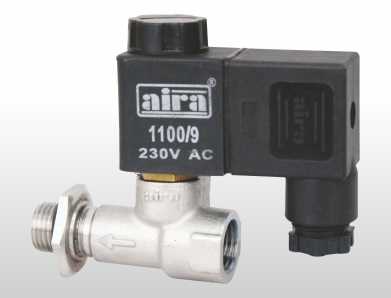Solenoid valves are widely used in various industrial applications due to their high reliability, efficiency, and quick response time. In this blog, we will provide a comprehensive guide to solenoid valves, including their types, applications, how to select the right valve, and maintenance.
What is a Solenoid Valve?
A solenoid valve is an electromechanical device that uses an electromagnetic coil to control the flow of fluids, such as gas or liquid. When an electric current is passed through the coil, it generates a magnetic field that activates the valve, allowing fluid to flow through it. Solenoid valves are commonly used in various industrial processes, including HVAC systems, water treatment plants, and medical equipment.
Types of Solenoid Valves
There are several types of solenoid valves, each designed for specific applications. The most common types include:
Direct-acting solenoid valves: These valves use a plunger to open and close the valve. Direct-acting valves are typically used in low-pressure applications.
Pilot-operated solenoid valves: These valves use a diaphragm to control the flow of fluid. Pilot-operated valves are typically used in high-pressure applications.
Normally closed solenoid valves: These valves are closed by default and require an electric current to open them. Normally closed valves are commonly used in applications where safety is a concern.
Normally open solenoid valves: These valves are open by default and require an electric current to close them. Normally open valves are commonly used in applications where a constant flow of fluid is required.
Two-way solenoid valves: These valves have two ports and are used to control the flow of fluid in one direction.
Three-way solenoid valves: These valves have three ports and are used to control the flow of fluid in two directions.
Applications of Solenoid Valves
Solenoid valves are used in various industries, including:
HVAC systems: Solenoid valves are used to control the flow of refrigerants in air conditioning and heating systems.
Water treatment plants: Solenoid valves are used to control the flow of water in treatment processes, such as filtering and chlorination.
Medical equipment: Solenoid valves are used in medical equipment, such as blood analyzers and respirators, to control the flow of fluids.
Automotive industry: Solenoid valves are used in fuel injectors and transmission systems in vehicles.
Manufacturing: Solenoid valves are used in manufacturing processes, such as controlling the flow of gas in welding equipment.
How to Select the Right Solenoid Valve
When selecting a solenoid valve, there are several factors to consider, including the type of fluid, the flow rate, and the pressure. It’s essential to choose the right valve to ensure optimal performance and prevent damage to the equipment.
Type of fluid: It’s crucial to choose a valve that is compatible with the fluid being used. For example, if the fluid is corrosive, a valve made of stainless steel may be required.
Flow rate: The flow rate is another critical factor to consider when selecting a solenoid valve. The flow rate is the amount of fluid that passes through the valve per unit of time. It’s essential to choose a valve that can handle the required flow rate without causing damage or reducing efficiency.
Pressure: The pressure of the fluid is also an important factor to consider. The valve must be able to withstand the pressure without leaking or failing.
Size: The size of the valve should also be considered, as it can affect the flow rate and pressure.
Operating environment: The operating environment of the valve should also be taken into consideration. For example, if the valve will be exposed to high temperatures, a valve made of heat-resistant materials may be required.
Maintenance of Solenoid Valves
Proper maintenance is essential to ensure the optimal performance and longevity of solenoid valves. Here are some maintenance tips to keep in mind:
Regular inspection: Solenoid valves should be inspected regularly for signs of wear or damage. Any issues should be addressed promptly to prevent further damage or failure.
Cleaning: Solenoid valves should be cleaned regularly to prevent the buildup of dirt or debris. Cleaning can be done using a mild detergent and water or a solvent that is compatible with the valve’s material.
Lubrication: Some solenoid valves require lubrication to operate correctly. The manufacturer’s instructions should be followed when applying lubricant.
Replacement of parts: Over time, certain parts of the solenoid valve may wear out and need to be replaced. It’s essential to use genuine parts and follow the manufacturer’s instructions when replacing parts.
In conclusion, solenoid valves are essential components in various industrial applications, and selecting the right valve and maintaining it properly can ensure optimal performance and longevity. By understanding the types of solenoid valves, their applications, how to select the right valve, and maintenance, you can make informed decisions that help improve your processes’ efficiency and safety.


